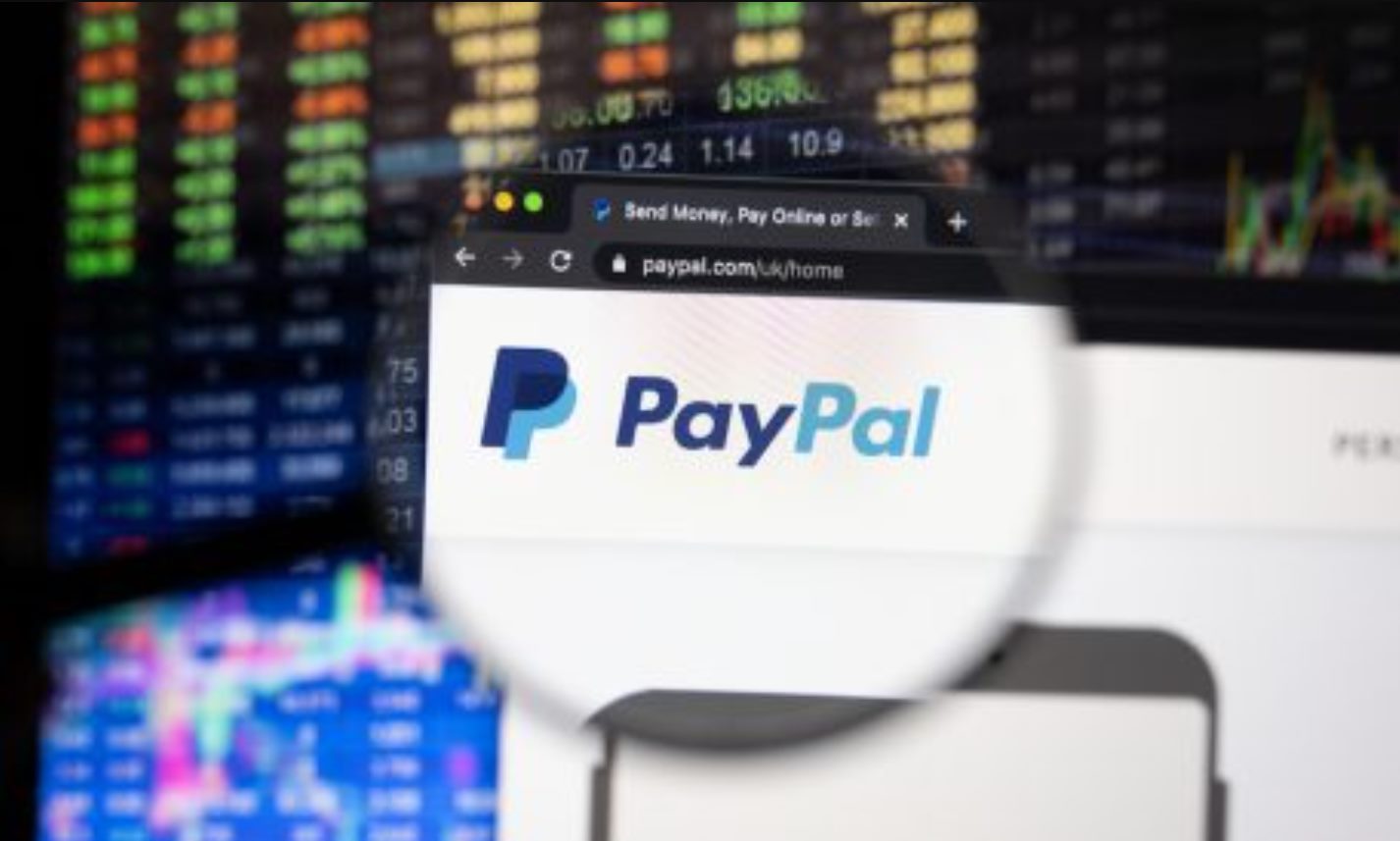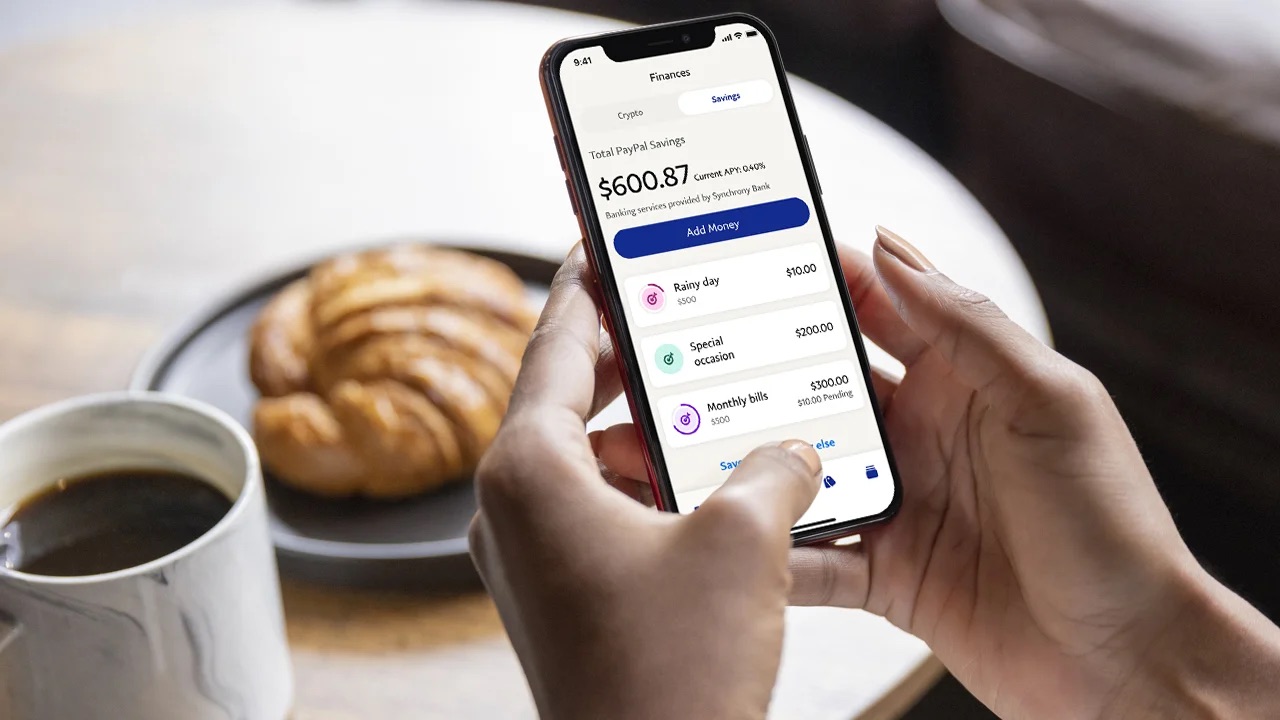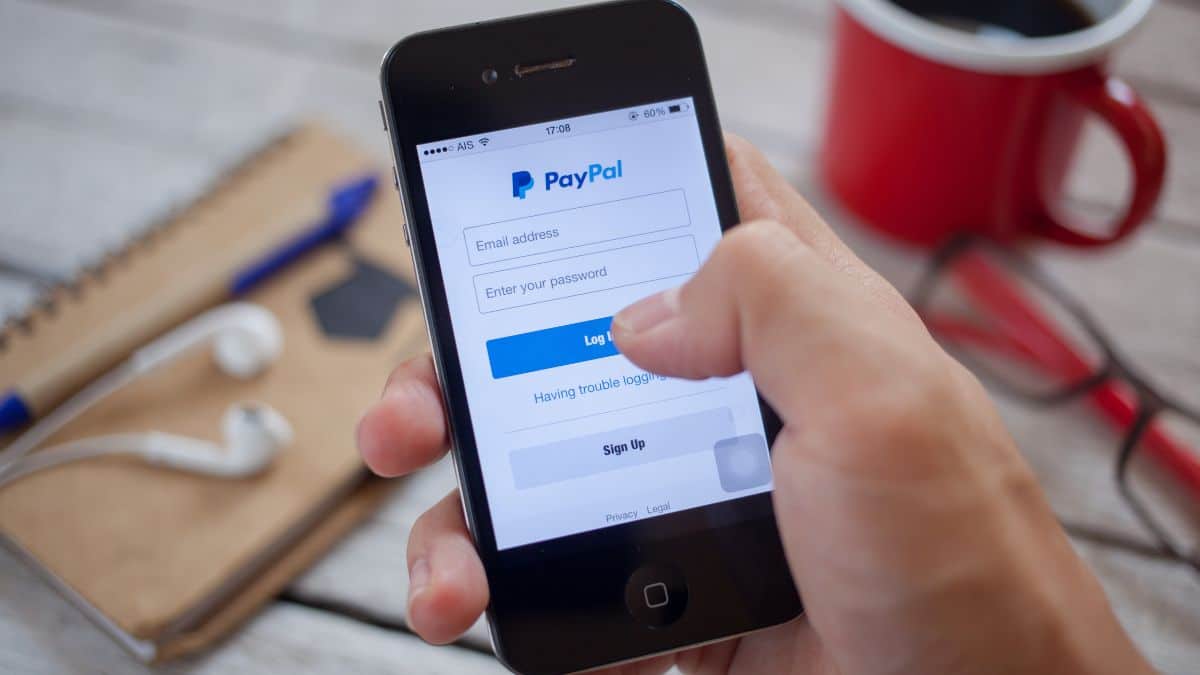Introduction
PayPal Holdings Inc. is a leading global digital payments platform that allows individuals and businesses to make online transactions securely and efficiently. Established in 1998, PayPal has emerged as one of the most trusted and widely used payment solutions worldwide. With its user-friendly interface and robust security features, PayPal has revolutionized the way people send and receive money online.
As a digital payments giant, PayPal offers a range of services, including online payments, peer-to-peer transfers, and payment processing solutions for businesses. It has become an integral part of e-commerce, enabling millions of sellers to accept payments from customers across borders.
As a publicly traded company, PayPal regularly releases its earnings reports to provide insights into its financial performance. These reports not only showcase the company’s revenue and profitability but also shed light on trends in the digital payments industry. Investors, analysts, and stakeholders closely monitor PayPal’s earnings announcements as they play a crucial role in assessing the company’s growth trajectory and business outlook.
The timing of PayPal’s earnings release is significant in the financial markets. Traders and investors eagerly await these announcements to gauge the company’s financial health and make informed investment decisions. Whether you are a seasoned trader or a casual investor, staying up-to-date with PayPal’s earnings reports can provide valuable insights into the company’s performance and industry trends.
In this article, we will delve into the dynamics of PayPal’s earnings reports, exploring the factors that influence the company’s financial results, the key metrics to watch out for, and how to trade PayPal’s earnings successfully. So, fasten your seatbelts as we embark on a journey to understand the world of PayPal’s earnings and unlock potential trading opportunities.
What is PayPal?
PayPal is a globally recognized digital payments platform that provides individuals and businesses with a convenient and secure way to make online transactions. It offers a range of services that include online payments, money transfers, and payment solutions for merchants.
Founded in 1998, PayPal has grown into a trusted and widely used payment platform, with over 392 million active user accounts worldwide as of the first quarter of 2021. Users can link their bank accounts, credit cards, or debit cards to their PayPal accounts, allowing for seamless and secure transactions with just a few clicks. Whether it’s sending money to a friend, paying for online purchases, or receiving payments for goods and services, PayPal simplifies the process and provides peace of mind with its robust security measures.
One of the key advantages of using PayPal is its wide acceptance across various online platforms and merchants. PayPal is integrated into countless websites, making it a convenient and preferred payment method for online shopping. It also offers buyer protection, giving customers added confidence in their transactions by offering refunds and dispute resolution services in case of any issues with purchases.
In addition to individual users, PayPal provides a range of services tailored to businesses. With PayPal Business, merchants can accept payments from customers, set up online stores, manage invoices, and access a suite of tools to streamline their operations. PayPal’s payment solutions offer flexibility, convenience, and security to businesses of all sizes.
Overall, PayPal has transformed the way we transact online, making it easier, faster, and more secure. Its user-friendly interface, extensive network, and commitment to customer protection have made it a top choice for individuals and businesses around the world. As the digital payments landscape continues to evolve, PayPal remains at the forefront, enabling seamless financial transactions and powering the growth of e-commerce globally.
How does PayPal make money?
PayPal generates revenue through various channels, offering a range of services to individuals and businesses. Here are the primary ways PayPal makes money:
1. Transaction Fees: PayPal charges merchants a transaction fee for each payment they receive. The fee is typically a percentage of the transaction amount, along with a fixed fee per transaction. The exact fee structure may vary depending on factors such as the country and the type of transaction (e.g., domestic or international). These transaction fees contribute significantly to PayPal’s revenue stream.
2. Cross-border Fees: When a payment involves currency conversion or crosses international borders, PayPal charges additional fees. These fees are typically a percentage of the transaction amount, reflecting the complexities and costs associated with managing cross-border payments. Given the global reach of PayPal, cross-border fees generate a substantial portion of its revenue.
3. Interest Income: PayPal offers credit services, such as PayPal Credit and Pay in 4, allowing eligible customers to make purchases and pay over time. PayPal earns interest income on the outstanding balances of these credit facilities. This interest income adds to PayPal’s revenue stream and is influenced by factors such as interest rates and customer borrowing behavior.
4. Merchant Services: PayPal offers a suite of merchant services designed to help businesses manage their payments, including payment processing, invoicing, and subscription management. These services often come with additional fees and add-ons, providing businesses with a comprehensive payment solution tailored to their needs. The revenue generated from merchant services contributes to PayPal’s overall earnings.
5. Venmo: Venmo, a popular mobile payment app owned by PayPal, allows users to send and receive money from friends and family. While Venmo itself is a free service, PayPal generates revenue by offering optional add-ons and services to Venmo users. These include instant transfers to bank accounts, faster access to funds, and merchant integration options, all of which come with associated fees.
6. Other Revenue Streams: In addition to the core services mentioned above, PayPal also generates revenue through various value-added services. These include partnerships with financial institutions, referral programs, transaction insurance, and other auxiliary services that complement its core business model. These additional revenue streams contribute to PayPal’s overall financial performance.
By offering a variety of services and charging fees for its core offerings, PayPal has established a robust and diversified revenue model. This allows the company to adapt to changing market dynamics and continue its growth trajectory in the ever-evolving digital payments industry.
When will PayPal report earnings?
PayPal follows a quarterly reporting schedule, providing insights into its financial performance and future projections to investors, analysts, and stakeholders. The company typically releases its earnings reports within a few weeks after the end of each quarter.
To determine the exact date of PayPal’s earnings release, one can refer to the company’s investor relations website or financial news sources. PayPal announces the date and time of its earnings release well in advance, allowing market participants to plan accordingly.
In general, PayPal’s earnings reports coincide with the earnings season, during which many publicly traded companies announce their financial results. The earnings season is often marked by increased market activity and volatility, as investors analyze the performance of companies and adjust their investment strategies accordingly.
It is worth noting that PayPal’s earnings reports are not limited to simply numbers. The company also hosts earnings calls, where executives discuss the financial results, provide insights into the company’s performance, and address questions from analysts and investors. These earnings calls offer valuable additional information beyond the written report, providing a deeper understanding of PayPal’s financial health and business outlook.
For traders and investors, the timing of PayPal’s earnings release is crucial. It presents an opportunity to assess the company’s financial performance, evaluate its growth prospects, and make informed investment decisions. Additionally, the overall market sentiment during the earnings season can impact the price and volatility of PayPal’s stock, making it an important period for traders seeking to capitalize on short-term market movements.
In summary, PayPal reports its earnings on a quarterly basis, typically following the earnings season. By staying updated on the company’s earnings release dates, investors and traders can access valuable information that can help shape their investment strategies and navigate the dynamic financial markets with confidence.
Factors Affecting PayPal’s Earnings
Several factors can influence PayPal’s earnings and financial performance. Understanding these factors is crucial for investors, analysts, and stakeholders to assess the company’s growth prospects and make informed investment decisions. Here are some key factors that can affect PayPal’s earnings:
1. Transaction Volume: PayPal’s revenue is closely tied to the volume of transactions processed on its platform. Higher transaction volumes generally lead to increased revenue from transaction and processing fees. Factors such as the overall growth of e-commerce, consumer spending patterns, and PayPal’s market share can impact transaction volumes and subsequently affect earnings.
2. Active User Base: The number of active PayPal accounts is a significant driver of the company’s earnings. A larger user base translates into more transactions and revenue opportunities for PayPal. Factors that can affect the growth of the user base include marketing and customer acquisition efforts, user experience, and the competitive landscape.
3. Fee Structures: Changes in PayPal’s fee structure can impact its earnings. Adjustments in transaction fees or cross-border fees can either attract more customers or affect transaction volumes. Balancing competitive pricing with maximizing revenue is a critical consideration for PayPal in determining its fee structure.
4. Competition: PayPal operates in a highly competitive market, with numerous players offering digital payment solutions. Increasing competition can have an impact on PayPal’s market share, pricing flexibility, and ability to attract and retain users. Innovations, new entrants, and evolving consumer preferences are factors that can influence PayPal’s earnings in a competitive landscape.
5. Regulatory Environment: PayPal operates in multiple jurisdictions and is subject to various regulations and compliance requirements. Changes in regulations, such as those related to data protection, anti-money laundering measures, or financial transaction regulations, can impact PayPal’s operations and potentially affect its earnings.
6. Technological Advancements: Technological advancements, including mobile payments, blockchain, and digital wallets, can disrupt the digital payments industry. PayPal’s ability to adapt to and capitalize on these advancements can influence its earnings. The company’s investments in research and development, partnerships, and acquisitions play a crucial role in staying ahead of the curve.
7. Currency Fluctuations: As an international payment provider, PayPal is exposed to the risk of currency fluctuations. Changes in the value of currencies can impact PayPal’s revenue, especially in transactions involving currency conversion. Managing currency risk and implementing effective hedging strategies are important considerations for PayPal.
8. Economic Conditions: PayPal’s earnings can be influenced by broader economic trends and conditions. Factors such as global economic growth, inflation, interest rates, and consumer confidence can impact transaction volumes and consumer spending, ultimately affecting PayPal’s earnings.
By closely monitoring these factors and their impact on PayPal’s earnings, investors and analysts can better evaluate the company’s financial performance and make informed decisions. Understanding the dynamics of these factors is crucial for assessing the growth prospects and long-term sustainability of PayPal as a leading digital payments provider.
Importance of PayPal’s Earnings Announcement
PayPal’s earnings announcement is a significant event for investors, analysts, and stakeholders as it provides valuable insights into the company’s financial performance and growth prospects. Here are some reasons why PayPal’s earnings announcement holds great importance:
1. Performance Evaluation: PayPal’s earnings announcement allows investors and analysts to evaluate the company’s financial health and performance. It provides key financial metrics such as revenue, net income, and earnings per share, allowing for a comprehensive assessment of the company’s profitability and growth potential. By comparing these metrics to previous quarters or analyst expectations, stakeholders gain insights into PayPal’s trajectory and can make informed investment decisions.
2. Industry Insight: PayPal’s earnings announcement sheds light on trends and developments in the digital payments industry. As a leading player in the sector, PayPal’s performance and outlook provide a broader perspective on the state of the industry. Investors and analysts can analyze payment volumes, market share, and the adoption of new technologies to gauge the growth potential of the overall sector.
3. Guidance and Projections: Alongside financial results, PayPal’s earnings announcement typically includes guidance and projections for future performance. These forecasts offer insight into the company’s strategies, growth targets, and anticipated challenges. The provided guidance assists investors and analysts in formulating long-term investment strategies and assessing PayPal’s ability to achieve its stated objectives.
4. Investor Sentiment: PayPal’s earnings announcement can influence investor sentiment and market perception of the company. If the earnings report exceeds expectations, it may boost investor confidence and drive up the company’s stock price. Conversely, if the earnings fall short of expectations, it can lead to a decline in investor sentiment and a decrease in the stock price. The earnings announcement, therefore, has the potential to impact short-term market movements and trading opportunities.
5. Analyst Recommendations: Following PayPal’s earnings announcement, analysts often update their recommendations and price targets for the company’s stock. These recommendations can influence investor decisions and market sentiment. Positive analyst assessments may attract more investors, while negative recommendations can impact the company’s stock performance.
6. Investor Relations: PayPal’s earnings announcement serves as a platform for the company to communicate with shareholders and the broader investment community. The accompanying earnings call provides an opportunity for executives to discuss financial results, address investor concerns, and provide insights into the company’s strategies and future plans. This engagement fosters transparency and strengthens the company’s investor relations.
Overall, PayPal’s earnings announcement plays a vital role in providing financial transparency, industry insights, and guidance to investors, analysts, and stakeholders. It serves as a critical source of information for evaluating the company’s performance, formulating investment strategies, and understanding the dynamics of the digital payments industry. Staying informed about PayPal’s earnings announcements is essential for those seeking to make well-informed investment decisions in the increasingly competitive and rapidly evolving financial landscape.
Key Metrics to Look for in PayPal’s Earnings Report
PayPal’s earnings report is filled with various financial metrics that provide valuable insights into the company’s performance and growth potential. Here are some key metrics to look for when analyzing PayPal’s earnings report:
1. Revenue: Revenue is a fundamental metric to assess PayPal’s financial performance. Pay attention to the company’s overall revenue figure, which represents the total amount of money generated from its operations. Comparing revenue to previous quarters, year-over-year growth, and analyst expectations can provide valuable insights into the company’s growth trajectory.
2. Total Payment Volume (TPV): TPV captures the total value of transactions processed through PayPal’s platform. It reflects the volume and value of payments made by consumers and businesses. Monitoring TPV growth is crucial as higher transaction volumes indicate increased usage of PayPal’s services and potential revenue expansion.
3. Active Accounts: The number of active accounts reflects the size and reach of PayPal’s user base. It signifies the potential for future transaction volumes and revenue growth. Pay attention to the growth rate of active accounts, both in absolute numbers and as a percentage of the total user base, to assess the company’s ability to attract and retain users.
4. Net New Active Accounts: Net new active accounts represent the increase or decrease in PayPal’s user base during a specific period. These figures provide insights into the company’s ability to expand its customer base and attract new users. Positive net new active accounts indicate market penetration and potential revenue growth.
5. Payment Transactions per Account: This metric measures the average number of payment transactions per active account. It helps evaluate user engagement and the level of activity on PayPal’s platform. An increasing trend in payment transactions per account suggests higher user adoption and utilization of PayPal’s services.
6. Transaction Expenses: Transaction expenses encompass the costs associated with processing transactions, including fees paid to payment networks and financial institutions. Monitoring the transaction expense ratio helps assess PayPal’s ability to manage costs and maintain profitability amid increasing transaction volumes.
7. Earnings per Share (EPS): EPS measures the profitability of the company on a per-share basis. It indicates the portion of the company’s earnings allocated to each outstanding share. Analyzing EPS growth helps assess PayPal’s profitability and the effectiveness of its revenue generation strategies.
8. Net Income Margin: Net income margin represents the percentage of revenue that translates into profit after accounting for all expenses, including operating costs, taxes, and interest. A higher net income margin indicates strong profitability and efficient cost management.
9. Guidance and Projections: Pay attention to the guidance and projections provided by PayPal for future periods. These forecasts offer insights into the company’s growth expectations, market opportunities, and potential challenges. Comparing actuals to guidance can help assess the company’s ability to meet its targets.
By closely monitoring these key metrics in PayPal’s earnings report, investors, analysts, and stakeholders can gain a comprehensive understanding of the company’s financial performance, growth potential, and market position. The analysis of these metrics provides a foundation for making informed investment decisions and evaluating PayPal’s position in the dynamic landscape of digital payments.
Analyst Expectations for PayPal’s Earnings
Analyst expectations play a crucial role in shaping market sentiment and influencing investor decisions when it comes to PayPal’s earnings. Before the release of earnings reports, analysts analyze various factors to formulate their projections and estimates. Here’s a closer look at what analysts consider and their expectations for PayPal’s earnings:
1. Revenue Growth: Analysts closely monitor PayPal’s revenue growth trends. They assess the company’s ability to attract new users, increase transaction volumes, and expand into new markets. Based on historical data, industry trends, and factors such as market share and competitive dynamics, analysts develop estimates for PayPal’s revenue growth potential for the upcoming quarter.
2. Active Account Growth: The growth rate of PayPal’s active accounts is an important metric for analysts. They evaluate factors such as marketing efforts, user adoption, customer churn rate, and the potential impact of new product launches. Analysts consider these factors to estimate the rate at which PayPal’s user base is likely to grow, which can significantly impact revenue and profitability.
3. Transaction Volume: Analysts analyze PayPal’s transaction volume to gauge its ability to process a higher number of payments and capture a larger market share. They consider factors such as the overall growth of e-commerce, consumer spending patterns, and the company’s strategic initiatives to estimate transaction volume growth. Analysts may also focus on specific segments, such as cross-border transactions, to assess PayPal’s global expansion efforts.
4. Costs and Margins: Assessing PayPal’s costs and profit margins is crucial for analysts. They evaluate factors such as transaction expenses, operating costs, marketing expenses, and investments in technology and infrastructure. Analysts scrutinize these factors to estimate the company’s ability to manage costs while maintaining profitability.
5. Guidance and Outlook: Analysts analyze PayPal’s guidance and outlook statements for future periods. They consider the company’s forecasts, growth targets, and market opportunities outlined in the guidance. Analysts may adjust their own estimates based on the company’s projections and assess the alignment between management’s expectations and market consensus.
6. Market Trends and Competitor Analysis: Analysts closely monitor industry trends in the digital payments space and assess PayPal’s competitive position. They track the performance of competitors, market dynamics, emerging technologies, and regulatory developments. These factors help analysts develop a comprehensive view of the market environment and understand how PayPal’s earnings may be influenced.
Based on their analysis, analysts typically publish earnings estimates and projections for PayPal. These estimates include key metrics such as revenue, earnings per share (EPS), and other financial indicators. Market participants, including investors and traders, closely follow analyst expectations as they provide valuable benchmarks against which PayPal’s actual results are compared.
It’s important to note that analyst expectations can vary, and there may be a consensus range of estimates rather than a single figure. Deviations from these expectations, either positive or negative, can have a significant impact on PayPal’s stock price and market sentiment following the earnings announcement.
Ultimately, understanding analyst expectations and the factors they consider can help investors and stakeholders gain insights into market perceptions, make informed decisions, and evaluate PayPal’s financial performance in the context of industry trends and competitive dynamics.
How to Trade PayPal’s Earnings
Trading PayPal’s earnings can present valuable opportunities for investors and traders who seek to take advantage of potential price movements around the earnings announcement. Here are some strategies to consider when trading PayPal’s earnings:
1. Research and Analysis: Before trading PayPal’s earnings, conduct thorough research and analysis. Evaluate analyst expectations, market trends, and historical performance to gain insights into the company’s financials and growth potential. Analyze key metrics such as revenue, active accounts, and transaction volume to understand PayPal’s positioning in the digital payments industry.
2. Develop a Trading Plan: Develop a trading plan that outlines your strategy, risk tolerance, and desired outcomes. Determine whether you plan to take a long or short position, set entry and exit points, and identify potential stop-loss and take-profit levels. A trading plan helps provide structure and discipline when executing trades during the volatile earnings period.
3. Monitor Market Sentiment: Stay informed about market sentiment leading up to PayPal’s earnings release. Monitor analysts’ recommendations, news articles, and social media discussions to gauge market expectations and sentiment towards PayPal. This information can provide insights into potential market reactions and help shape your trading strategy.
4. Utilize Options: Options trading can be an effective strategy around earnings announcements. Consider using options to take advantage of potential price volatility. Strategies such as buying call or put options, straddles, or strangles can provide flexibility and mitigate risk during uncertain market conditions.
5. Consider Historical Volatility: Examine PayPal’s historical price volatility around earnings announcements. Identify the average price movement based on past earnings releases, as this can help determine realistic price targets and potential trading opportunities. Historical volatility can also provide insights into the potential risk and reward associated with trading PayPal’s earnings.
6. Trade Before or After the Announcement: Decide whether to open a trade before or after the earnings announcement. Trading before the announcement can be more speculative as it involves predicting the outcome and market reaction. Trading after the announcement allows you to react to the immediate market response. Assess your risk tolerance and preferred trading approach when deciding on the timing of your trades.
7. Manage Risk: Implement proper risk management techniques to protect your trading capital. Set stop-loss orders to limit potential losses and take-profit orders to secure profits. Consider using position sizing techniques to ensure your trades are in line with your risk tolerance. Adhering to risk management principles is essential for long-term success in trading.
8. Follow the Earnings Call: Participate or closely follow PayPal’s earnings call. This provides an opportunity to gain further insights from management regarding the company’s performance, future prospects, and market outlook. Management commentary during the call can influence market sentiment and trading opportunities.
Trading PayPal’s earnings requires careful consideration, research, and risk management. Keep in mind that trading around earnings announcements can be highly volatile and subject to unexpected market reactions. It is essential to stay informed, adapt to market conditions, and adjust your trading strategy accordingly.
Remember that past performance is not indicative of future results, and it is advisable to consult with a financial professional or broker before engaging in any trading activities.
Conclusion
PayPal’s earnings reports play a crucial role in providing insights into the company’s financial performance, growth prospects, and industry trends. Understanding key metrics such as revenue, active accounts, transaction volume, and analyst expectations is essential for investors and traders looking to make informed investment decisions.
By closely monitoring PayPal’s earnings announcements, traders and investors can assess the company’s financial health, evaluate its growth trajectory, and identify potential trading opportunities. Strategies such as conducting thorough research, developing a trading plan, utilizing options, and managing risk can help navigate the volatility and capitalize on potential price movements surrounding earnings releases.
It is important to consider market sentiment, historical volatility, and market conditions when trading PayPal’s earnings. Trading decisions should be based on thorough analysis, incorporating both fundamental and technical factors. Additionally, staying informed about industry trends, monitoring competitor activity, and following PayPal’s guidance and outlook can provide valuable insights for trading decisions.
Trading PayPal’s earnings can be rewarding but also comes with inherent risks. It requires careful planning, disciplined execution, and adherence to risk management principles. Traders and investors should remain cautious, diversify their portfolios, and seek appropriate professional advice.
As PayPal continues to shape the digital payments landscape, staying informed about its earnings reports will remain crucial for those wishing to navigate the dynamic financial markets with confidence and seize potential trading opportunities.

























